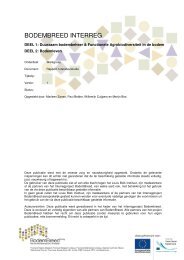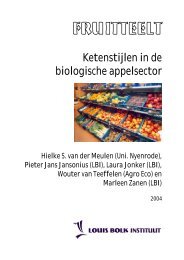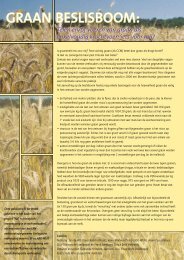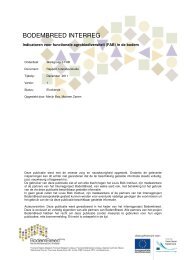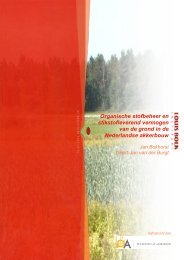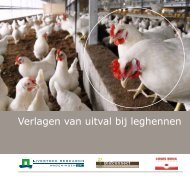Respiratory System Disorders and Therapy From a New - Louis Bolk ...
Respiratory System Disorders and Therapy From a New - Louis Bolk ...
Respiratory System Disorders and Therapy From a New - Louis Bolk ...
Create successful ePaper yourself
Turn your PDF publications into a flip-book with our unique Google optimized e-Paper software.
2.3.2. Pathophysiology of Bacterial Pneumonia<br />
Macroscopically, a uniform, sharply demarcated area of the lung parenchyma with an<br />
infectious fluid exudate is found, that may progress to involvement of an entire lobe. It is<br />
harder to separate the airway walls from the airway space in this area. The typical shape<br />
of the lung is less distinct. The air in this region is displaced <strong>and</strong> the lung — or a part of<br />
it — is converted to an airless, watery organ. This part of the lung will sink when put into<br />
water. The infected area usually abuts the visceral pleura between the lobes or over the<br />
convex outer perimeter of the lung. The margin that does not lie next to the pleura is<br />
mostly well defined <strong>and</strong> the adjacent parenchyma is not involved. Larger bronchi within<br />
the infected area often still contain air, which creates the so-called air bronchogram on<br />
X-ray (fig. 2.2.).<br />
Microscopically there is alveolar capillary dilatation <strong>and</strong> alveolar edema.<br />
The exudate is initially relatively low in cells but contains numerous bacteria (Streptococcus<br />
pneumoniae or pneumococcus). Inflammatory cells such as leukocytes are sparse at<br />
first, but abundant later on, the microorganisms disappear. At a later stage, leukocytes<br />
disappear <strong>and</strong> macrophages take their place. There is no tissue necrosis. If the patient<br />
survives this infection, there is, normally speaking, a complete resolution <strong>and</strong> resorption of<br />
the exudate <strong>and</strong> a recovery of the histology of the lung tissue. Occasionally, the fibrinopurulent<br />
exudate results in a so-called hepatisation of the affected area. At this stage, the<br />
lung tissue becomes fibrinous (fig. 2.2.).<br />
Blood Serum Changes in Pneumonia<br />
In the serum of the patient with pneumonia in the acute phase, the alternative<br />
complement pathway is activated. There is then an increase in type-specific<br />
antibodies against a capsular mucopolysaccharide <strong>and</strong> an aspecific protein is<br />
present in the serum: C-reactive protein (CRP). There is usually a leukocytosis<br />
with a shift to the left <strong>and</strong> the appearance of immature leukocytes.





